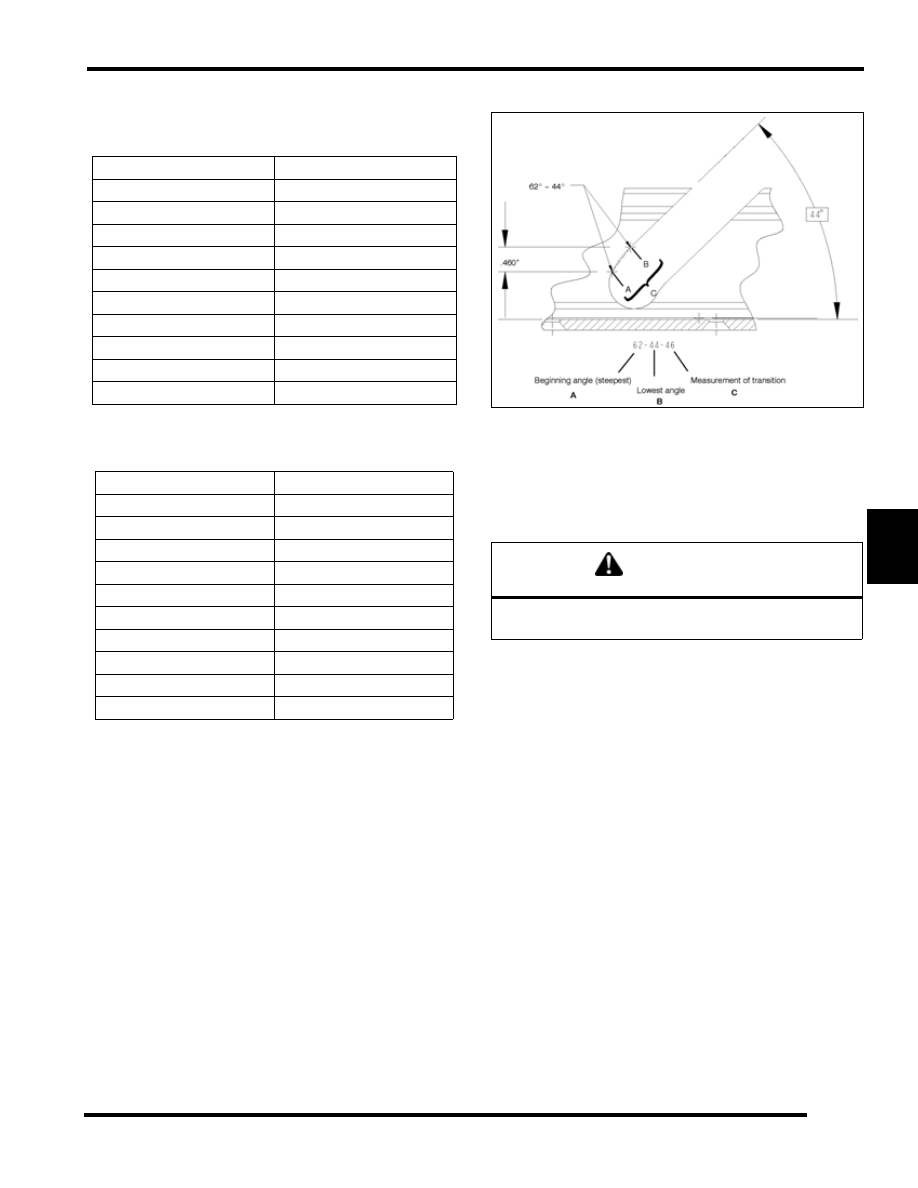Snowmobile Polaris Two Stroke (2007 year). Instruction - part 39

6.7
CLUTCHING
6
Non-ER LWT Driven Helixes
Team Helix Options with PERC
Team Ramp Angles
The Team helix is designated by the angle and length of the
angle on the back side of the ramp. The first number (A)
designates the starting angle of the ramp. The second number
(B) designates the finish angle. The last number (C) is the
transition distance (in inches) between the starting and finish
angles.
Non-ER LWT Driven Helixes
PART NUMBER
DESCRIPTION
5135438
70/44 - .46 / 66/44 - .46
5135480
64/38 - .65 / 64/38 - .46
5135486
62/40 - .46 / 64/40 - .55
5135521
74/50 - .46 / 74/48 - .46
5135522
74/44 - .46 / 74/40 - .46
5135523
70/50 - .46 / 70/48 - .46
5135524
70/44 - .46 / 70/40 - .46
5135525
66/50 - .46 / 66/48 - .46
5135526
66/44 - .46 / 66/40 - .46
5135537
64/38 - .65
PART NUMBER
DESCRIPTION
5133687
(58/44-46) ER
5133771
(58/42-46) ER
5133772
(62/46-46) ER
5133773
(62/42-46) ER
5133784
(58/40-46) ER
5133785
(62/40-46) ER
5133786
(62/44-46) ER
5133787
(62/48-46) ER
5133788
(60/44-46) ER
5133789
(60/46-46) ER
CAUTION
Do not install a non-ER helix on a Perc-equipped
snowmobile where the engine changes directions.